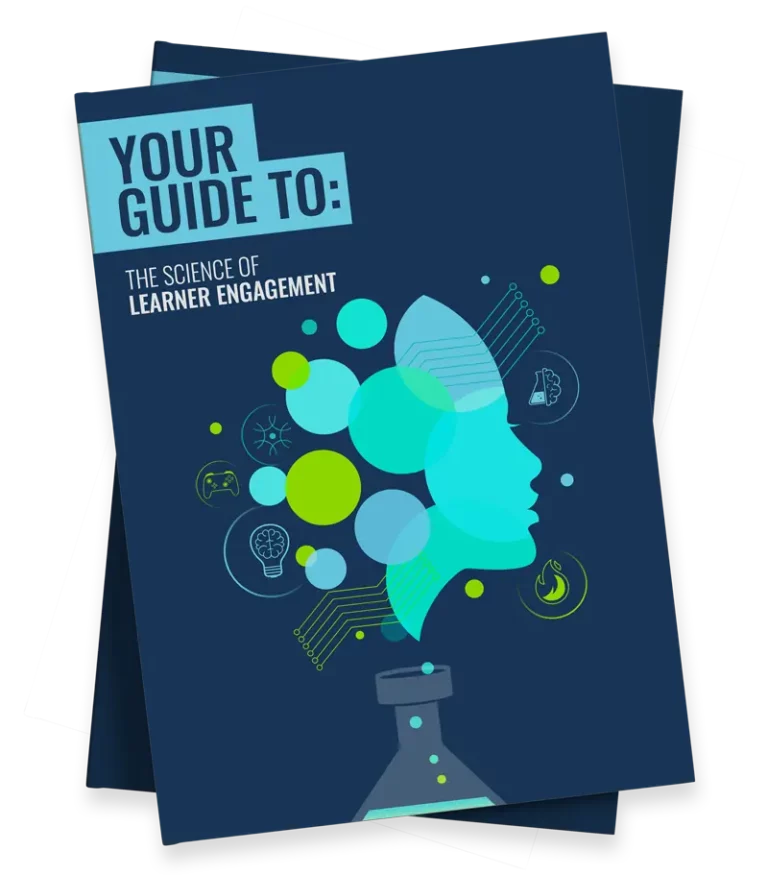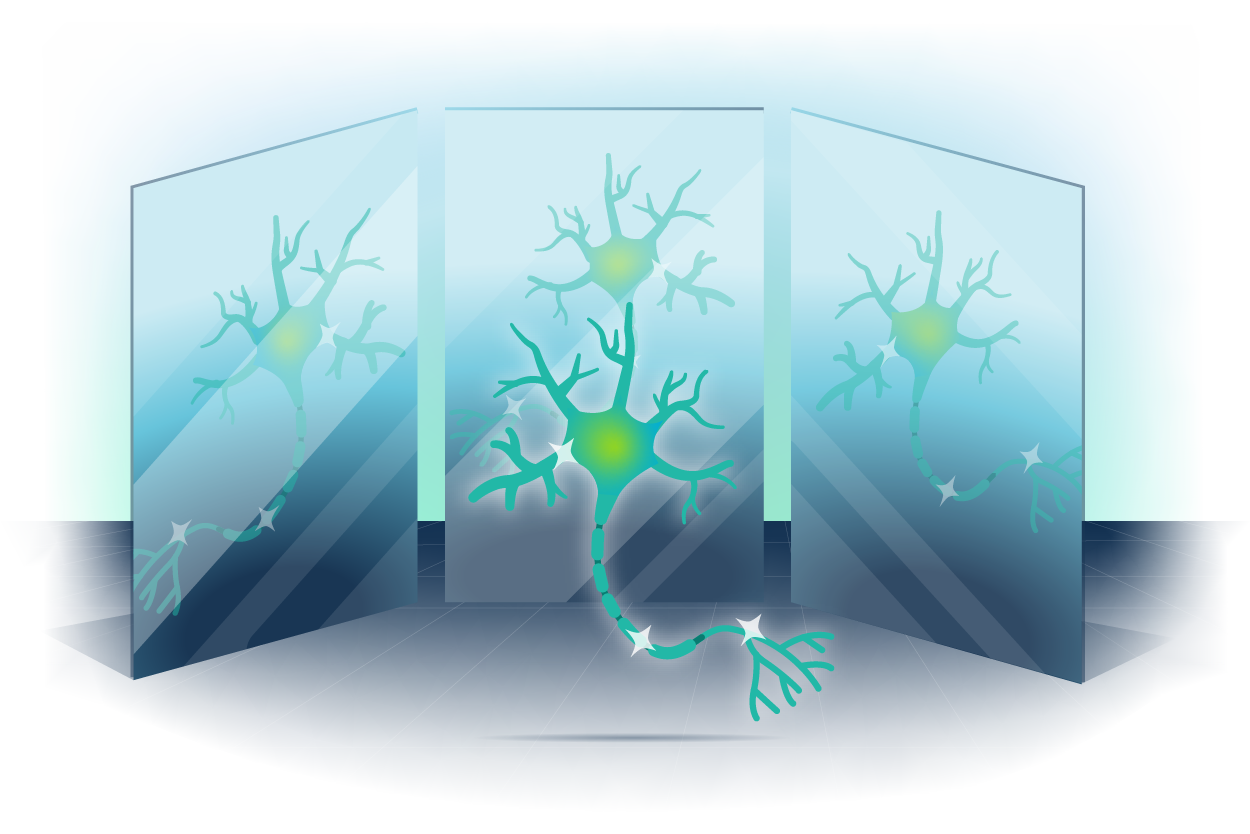
Have you ever flinched while watching someone trip? That powerful, instantaneous feeling of ‘knowing’ or ‘sharing’ an action isn’t a magic, telepathic connection. It’s the result of one of neuroscience’s most fascinating discoveries: mirror neurons.
These unique brain cells form the basis of our social intelligence, helping to fundamentally shape how we learn and connect. There’s a reason why they’ve been labelled ‘the most hyped concept in neuroscience’.
Mirror neurons act as the brain’s empathy circuit and internal simulator, bridging the gap between observation and action. Indeed, understanding how they work empowers us to transform passive consumption into active, accelerated learning.
In this article, we’ll explore the science behind how mirror neurons work and share five powerful strategies to leverage them effectively within your learning and development programmes. No more passive viewing. It’s time to put those mirror neurons to work!
The Discovery of Mirror Neurons
Imagine this: You see a colleague yawn widely during a Monday morning meeting. Suddenly, despite your best efforts and a good night’s kip, you’re fighting the urge to yawn yourself. What’s happening here? Well, you’re not just being suggestible.
In reality, you’re experiencing a live demonstration of your brain’s empathy circuit: your mirror neurons. The discovery of these social cells is a famous and somewhat fortuitous piece of neuroscience lore.
Back in the 1990s, a team of Italian researchers at the University of Parma were studying the brains of macaque monkeys. To do this, they placed electrodes in the monkey’s premotor cortex to monitor neurons firing when they performed specific tasks, like reaching for a peanut.
Here’s the fun part: At one stage, a researcher walked into the room and reached for a peanut themselves. Suddenly, despite the monkey being completely still, the monitors registered activity. The neurons responsible for performing the grasping action were firing.
In other words, the brain was internally mimicking the action it was observing. And voilà — the first ever mirror neurons had been identified. And it’s not just monkeys that have these cells. Humans do too and they play a key role in emotional connection and skill acquisition.
Mirror Neurons: A Simple Definition
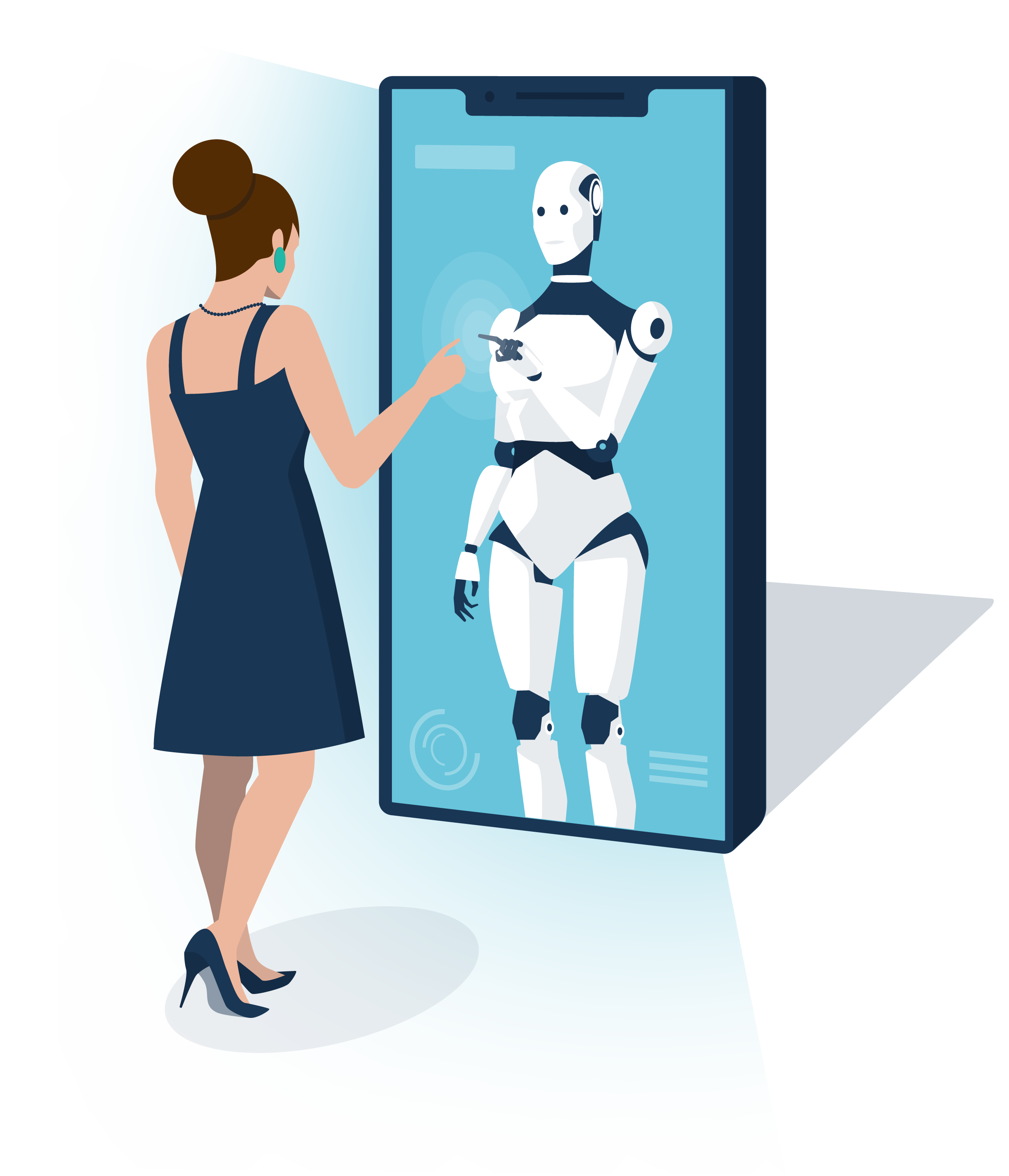
So, what are they?
In simple terms, mirror neurons are a special class of brain cells that fire both when you perform an action and when you see someone else perform that same action. It’s this dual role that makes them so special.
You can think of them as your brain’s built-in neural simulation system, or copy-and-paste function.
Let’s demonstrate this with an example. When you see Declan Rice line up to take a free kick, the mirror neurons in your brain internally map out the motor sequence required, rehearsing the movements without ever sending the signals to your body. This active, yet subconscious rehearsal mechanism provides the biological basis for observational learning.
But mirror neurons are more than mere imitators. Their true brilliance lies in helping us to decode intention. After all, their existence means we don’t have to actively analyse every action we see. Instead, these cells provide immediate, gut-level insight into all observable behaviour.
From Action to Empathy
Research suggests that these systems are also involved in mirroring sensations and emotions. If you see somebody step on a rake, the natural reaction is to wince. That’s because your brain is, to a small degree, simulating that sensation and how that person feels.
The same principle applies to positive emotions. When you see a friend laughing or beaming with joy, your mirror system simulates those same feelings in your own brain. In essence, you ‘catch’ their mood, helping to enhance that shared experience.
Ultimately, these cells are the biological bedrock of empathy and a key player in all forms of social learning. They turn observation into a felt experience, allowing us to bypass our slower analytical faculties and access immediate knowledge of what the other person is going through.
This isn’t just a feel-good neurological quirk — it’s crucial for organisational success. Indeed, according to an EY survey on empathetic leadership, its impact on the workplace includes:
- Inspiring positive change (87%)
- Mutual respect between employees and leaders (87%)
- Increased productivity among employees (85%)
- Reduced employee turnover (78%)
But, before moving on, let’s address a critical nuance: Mirroring is automatic, but empathy is a choice. Your mirror neurons provide a gut reaction. However, true empathy requires conscious cognitive effort and deliberate action.
That’s the difference between feeling sad when we see a stranger crying and actually stopping to offer a tissue (or, even better, a solution). Our mirror neurons form the foundation of empathy, but we as learning professionals must provide the impetus and the tools necessary to transform this impulse into something more meaningful.
How Mirror Neurons Work
So, we’ve established that your brain has these incredible copycat cells. But, how do they actually pull off this magic trick? Let’s break it down step-by-step.
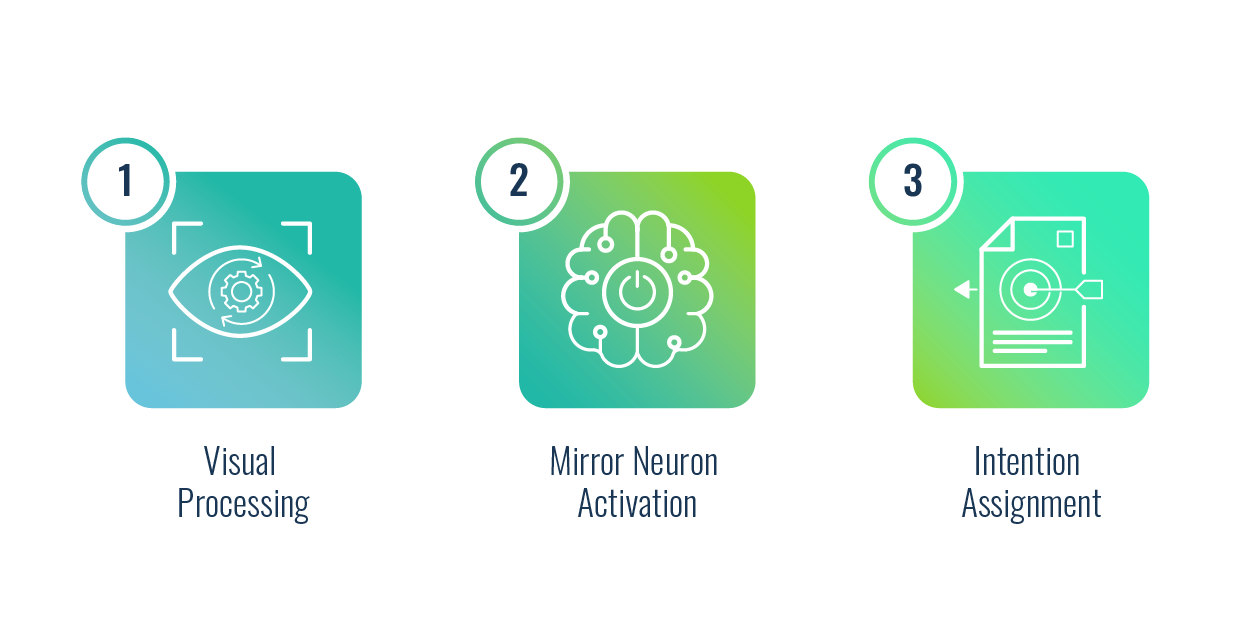
- Visual Processing: First up, as you might expect, your standard visual processing system kicks in. When you watch a guitarist execute a complex chord progression, your brain isn’t just seeing. It’s processing all the visual ingredients: the finger placements, the wrist movements, and the syncopation.
- Mirror Neurons Activate: This is where your mirror neurons, primarily located in brain regions like the premotor cortex and the inferior parietal lobule, join the party. They simulate the feeling of playing the guitar directly within your own motor system. In that moment, you’re not just seeing, you’re internally executing.
- Intention Assignment: Next, your motor neurons attempt to connect the action to your own internal library of goals and intentions. In doing so, your mirror neurons provide an impressively accurate guess at why someone is doing what they’re doing. This is the foundation of social intuition.
A simpler way to understand this process is:
Observation → Simulation → Understanding
Mirror Neurons Role in Learning
As you might expect, the existence of the mirror neuron system has major implications for how we view and approach education. After all, it’s clear that learning isn’t just about absorbing facts. Neural simulation and social connection also have important roles to play.
So, how can we use this information to our advantage in real-world and digital learning environments?
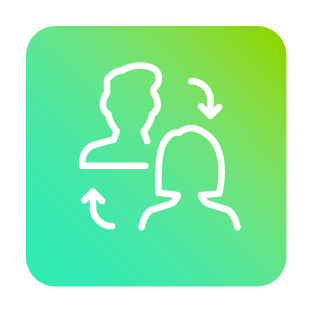
1. Observational Learning
We know the motor regions in your brain fire and rehearse when you watch someone else take action. This neural simulation is why a well-designed demonstration is far more effective than simply reading a dusty instruction manual.
That’s why you should always prioritise video tutorials, hands-on demos, and expert walkthroughs over static text. Visually modelling a process gives your learners’ brains a crucial head start, helping them to move past simple imitation and onto genuine skill acquisition.

2. Collaborative Skill Acquisition
Your mirror neurons are constantly seeking out the best models. This is the neurological reason why mentorship and coaching works so well. After all, observing an expert or a skilled peer triggers a comparative firing sequence that helps you to optimise your own approach.
With this in mind, implement social features across your learning systems to support these relationships. Think peer review processes, live-streamed group work, and dedicated virtual office hours with your subject matter experts.

3. Decoding Intention
As we’ve seen, mirror neurons play a vital role in decoding the intention behind a perceived act. This is helpful for mastering soft skills like negotiation and decision-making, as it allows learners to anticipate the consequences of various choices.
As such, ensure you include branching scenarios and video case studies within your training content. Observing and simulating the characters’ intentions and outcomes provides your learners’ brains with the necessary cognitive rehearsal to form real, actionable insights.
Activating the Mirror System
We now know three areas where mirror neurons can boost your learning strategy. But how do we take this information and transform our learning and development approach?
Well, here are five essential strategies to transform your learners from passive viewers into active neural simulators — a goal we can all get behind!

1. Focus on Visual Clarity
The mirror system requires clear, observable actions to simulate effectively. In other words, low-quality video or ambiguous demonstrations simply won’t cut it. Drag that blurry 480p clip over to your recycling bin.
Instead, use high-definition video that focuses on the expert’s hands, screen movements, or body language. What’s more, ensure your video player supports variable speed and loop functions. This lets learners repeat the observed action multiple times, perfecting the internal rehearsal.
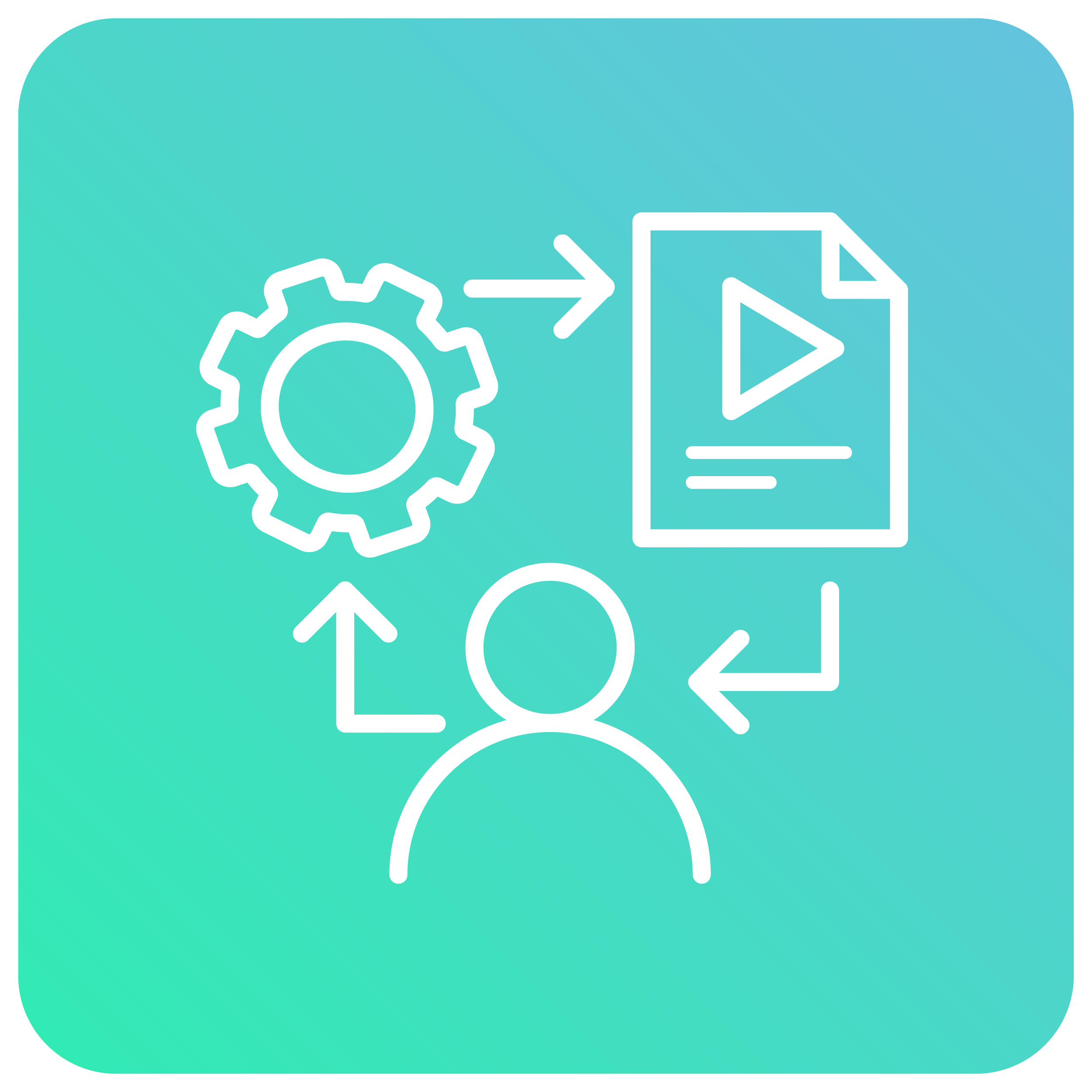
2. Watch, Do, Reflect
Remember, observation is one thing, action is another. The most powerful learning occurs when these happen in quick succession, with action reinforcing the neural pathways simulated by your mirror neurons. Your learning solution should facilitate this continuous loop.
To do this, structure your modules so that a ‘Watch’ component (such as a video) is paired with a ‘Do’ component (such as a scenario or challenge). For bonus points, this should be followed by a ‘Reflect’ component (where learners record their thoughts on the process).

3. Use Narrative to Drive Empathy
Learning that’s emotionally resonant sticks with us. This is partly because our mirror neurons compel us to viscerally feel the consequences of an observed action. By showing an emotional outcome, we, in a sense, mirror that feeling.
So, don’t shy away from emotion. Wrap your content in compelling narratives and show the human cost of decisions. Showcase frustrated faces and tense body language when a negotiation goes awry, and the genuine relief and celebratory success that follows when a strategy pays off.

4. Go to the Next Level
Outside of a face-to-face connection, the strongest possible trigger for mirror neurons is digital embodiment and presence. If your technology supports it, you should deploy realistic avatars or even full virtual reality (VR) environments where learners can observe peers or experts in a shared 3D space.
While these immersive environments often require a higher initial investment, they are the ultimate rehearsal space for high-risk or complex skills. By creating this powerful sense of digital presence, you ensure consistent mirror neuron firing, with skill acquisition sure to follow.

5. Social Learning Features
Since our brains are wired to learn from others, the most effective learning strategies are inherently social. Technology allows us to design for this biological reality, creating digital spaces where your team’s collective intelligence can flourish. For instance:
- Learning by Discussing: Many learning management systems offer customisable discussion forums. Here, learners can debate ideas in a context where every post and reply drives deeper understanding.
- Learning by Observing: Dedicated expert areas or virtual instructor-led training (vILT) offer a front-row seat to mastery. Indeed, by observing the thought processes of top performers, learners can subconsciously absorb their strategies.
- Learning by Collaborating: Why not create and share group challenges through your social learning tools? Working towards a common objective mirrors the same collaborative patterns that drive cohesion and innovation.
- Learning by Competing: Healthy competition, through features like Knowledge Contests, can also play a role. The emotional charge of competing keeps skills sharp and knowledge fresh long after the ‘final’ lesson.
Final Words
The discovery of mirror neurons validates a timeless truth about learning: it is, and always has been, a deeply social and empathetic process. These remarkable brain cells transform passive observation into neural rehearsal, accelerating everything from motor skill acquisition to emotional intelligence.
The key takeaway for learning designers is this: You simply cannot afford to treat content consumption as a passive experience. It’s time to stop designing for the static eye and start designing for the actively rehearsing brain.
This is where modern learning technology shines. It provides you with all the tools you need to connect your learners, promote collaboration, and design experiences that resonate on a cellular level. Now go put your new neural blueprint into action!
Thanks for reading. If you’ve enjoyed this content, please connect with me here or find more articles here.
You’ve mastered your mirror neurons and the power of social connection. Want the full biological blueprint? Grab your copy of ‘The Science of Learner Engagement’ guidebook today!

